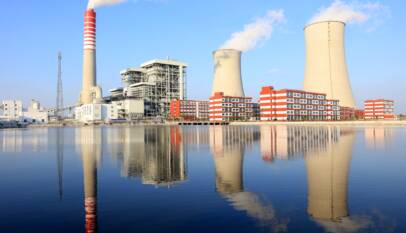CPEC is a key driver of FDI in Pakistan
China holds the top slot in terms of Foreign Direct Investment (FDI) contribution to Pakistan. However, the inflow of FDI into Pakistan has maintained steady growth under the successful implementation of CPEC related projects. The development of Special Economic Zones (SEZs) in the second phase of CPEC would make Pakistan a destination market. The industrial zones would attract foreign investors and stimulate the economic development of Pakistan.
Despite the huge impact of the Covid-19 pandemic on the Pakistani economy, the volume of foreign direct investment (FDI) in Pakistan has maintained an upward trend.
In recent years, Pakistan has promulgated a series of new policies and taken measures to continuously improve the investment environment and encourage foreign investment, which is now playing a positive role in attracting foreign investment. “However, I believe that one of fundamental reasons is that positive progress has been made in the construction of the China-Pakistan Economic Corridor (CPEC),” Cheng Xizhong, special commentator of China Economic Net and visiting professor at Southwest University of Political Science and Law said his on Wednesday.
In particular, China and Pakistan have clarity of thought about the next phase of the CPEC development, and both sides are pushing forward the construction of 10 special economic zones (SEZs), which makes foreign investors see the prospect of Pakistan’s economic development and realize that Pakistan is an investment market with great potential.
In March this year, Pakistan attracted FDI of US$ 279 million, an increase of 92% over the same period last year. According to the latest data from the State Bank of Pakistan (SBP), the FDI in the first nine months of this fiscal year reached US$ 2.148 billion, an increase of 137% over the same period of last fiscal year.
China is the largest direct investor in Pakistan, with an investment of US$ 872 million in the first nine months of this fiscal year, followed by Norway, Malta, Hong Kong, the United Kingdom and the United States.
China’s investment in Pakistan can be divided into two categories. One is investment in infrastructure projects such as energy and transportation. This kind of investment may not produce an immediate effect, but it is of great significance in the long run. It is mainly invested by state-owned enterprises.
For example, Chinese enterprises have helped Pakistan build many power plants and basically solved the current power shortage problem. However, in the long run, with the development of Pakistan’s economy, the demand for power will increase, so it is necessary to continue to invest in Pakistan’s power sector and build more power plants.
The other is the investment by Chinese small and medium-sized enterprises. China’s small and medium-sized enterprises are very active and an important force for foreign investment. They will go to invest wherever the investment environment is good. They invest in a wide range of fields, mainly agriculture, food processing industry, logistics industry, security industry, information technology, etcetera.
It is said that foreign investment mainly flows to Pakistan’s energy, transportation, information technology, finance and other industries, because these are the core sectors, and Pakistan has huge potential in these sectors.
For example, Pakistan has the huge potential of solar and wind energy and very rich coal and fossil fuel resources. If we make good use of them, it will be the key to solve the energy problem. China has very advanced technology in this field. To this end, Pakistan should expand various ways and channels to develop energy potential, and the government should provide the greatest convenience to foreign enterprises that invest in Pakistan’s energy industry and are willing to transfer advanced technology.
Throughout the history of world civilization, mankind has experienced agricultural revolution, industrial revolution and information revolution. At present, the ever-changing information technology is leading new changes in social production, creating new space for human life, expanding new areas of national governance, and greatly improving the ability of human beings to understand and transform the world.
Practice has proved that informatization is not only the engine of a country’s development and the pillar of realizing leapfrog development, but also the accelerator for the synchronous development of new industrialization, informatization, urbanization and agricultural modernization. It is not only the blood for economic development, but also an important tool to improve the modernization level of national governance.
China has achieved great success in the field of information technology, with the world’s leading information technology. With the spread of the pandemic, now online education, online office, online conference and online shopping is becoming more and more popular. All these rely on information technology support.
Experts say Pakistan needs stable policies to fully utilize China’s expertise in clean energy and industrial development
Pakistan’s energy sector investments are on a complex trajectory. Despite government effor…










